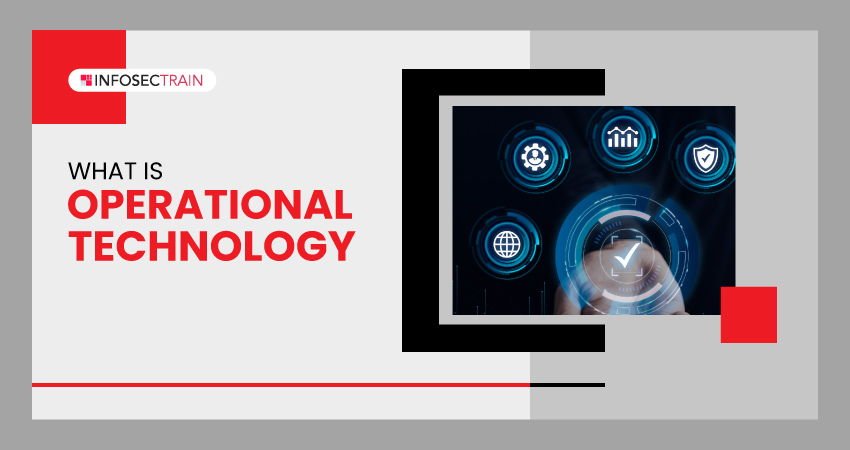What is Operational Technology (OT)?
It is crucial in today’s fast-paced technological landscape to have a firm grasp on the different facets of technology that power our everyday lives. Operational Technology (OT), a field that has been around for many years, has gained increasing attention recently due to cybersecurity concerns. Manufacturing, energy, transportation, and utility companies, among others, employ OT to keep tabs on and regulate their physical devices and processes using computer hardware and software. This article will go into what OT is and why it matters in the modern world.

Table of Contents
What is OT?
The role of OT in industries
The convergence of OT and IT
Challenges in OT security
Benefits of OT
OT security Future trends and challenges
What is OT?
Operational Technology (OT) encompasses a wide range of technologies that enable the monitoring, control, and automation of physical devices and processes. Unlike Information Technology (IT), which primarily deals with data and digital systems, OT focuses on the physical world. It involves devices like sensors, supervisory control and data acquisition (SCADA) systems, actuators, programmable logic controllers (PLCs), and other specialized hardware and software.
The role of OT in industries:
OT plays a crucial role in industries where the control and optimization of physical processes are paramount. For instance, in manufacturing, OT systems are used to control assembly lines, monitor machine performance, and ensure quality control. In the energy sector, OT is utilized to manage power generation, transmission, and distribution systems. Transportation systems heavily rely on OT to regulate traffic signals, monitor vehicle performance, and enhance safety measures. Similarly, OT is vital in utilities for monitoring water treatment plants, managing electrical grids, and optimizing resource allocation.
The convergence of OT and IT:
Traditionally, OT and IT have operated independently within organizations. However, with the advent of the Industrial Internet of Things (IIoT) and digital transformation initiatives, there has been a convergence of these two domains. The integration of OT and IT systems allows for improved efficiency, real-time data analysis, and enhanced decision-making capabilities.
Challenges in OT security:
As OT systems become more interconnected and integrated with IT networks, security concerns have become a top priority. OT systems are critical infrastructure components that, if compromised, can have severe consequences. The challenge lies in securing these systems against cyber threats while ensuring continuous operation. Legacy OT systems often lack the necessary security controls, making them vulnerable to cyberattacks. Organizations must employ robust security measures, such as network segmentation, access controls, and regular system updates, to protect their OT environments.
Benefits of OT:
Implementing OT systems can bring numerous benefits to industries. Below are a few key advantages:
- Increased efficiency: OT allows for real-time monitoring and control, enabling organizations to optimize processes, reduce downtime, and improve overall efficiency.
- Enhanced safety: OT systems help maintain a safe working environment by monitoring equipment conditions, identifying potential hazards, and triggering appropriate actions to mitigate risks.
- Predictive maintenance: By collecting data from sensors and analyzing it, organizations can implement predictive maintenance practices, identifying potential failures before they occur and scheduling maintenance activities proactively.
- Improved decision-making: The availability of real-time data from OT systems enables organizations to make data-driven decisions, respond quickly to changing conditions, and identify areas for improvement.
- Cost savings: Optimized processes, reduced downtime, and efficient resource allocation lead to cost savings in terms of maintenance, energy consumption, and overall operational expenses.
Future trends and challenges:
Several trends are influencing the trajectory that OT will take in the future as technology develops. Among these are the rise of edge computing, the development of digital twins, the combination of AI and ML algorithms, and the proliferation of OT solutions hosted on the cloud. Along with these innovations, however, businesses must deal with issues of interoperability, scalability, and security.
Final words:
Operational Technology (OT) plays a pivotal role in industries by enabling the monitoring, control, and automation of physical processes. Its integration with IT systems has revolutionized industries, bringing improved efficiency, safety, and decision-making capabilities. However, the convergence of OT and IT also poses security challenges that organizations must address. As technology continues to advance, OT will remain at the forefront of industrial innovation, driving progress and shaping the future of various sectors.
Join InfosecTrain’s OT/ICS Security Foundation training course to grasp OT, learn how to secure critical infrastructures, and mitigate cyber risks in industrial environments. Enroll now for comprehensive learning.







 1800-843-7890 (India)
1800-843-7890 (India)